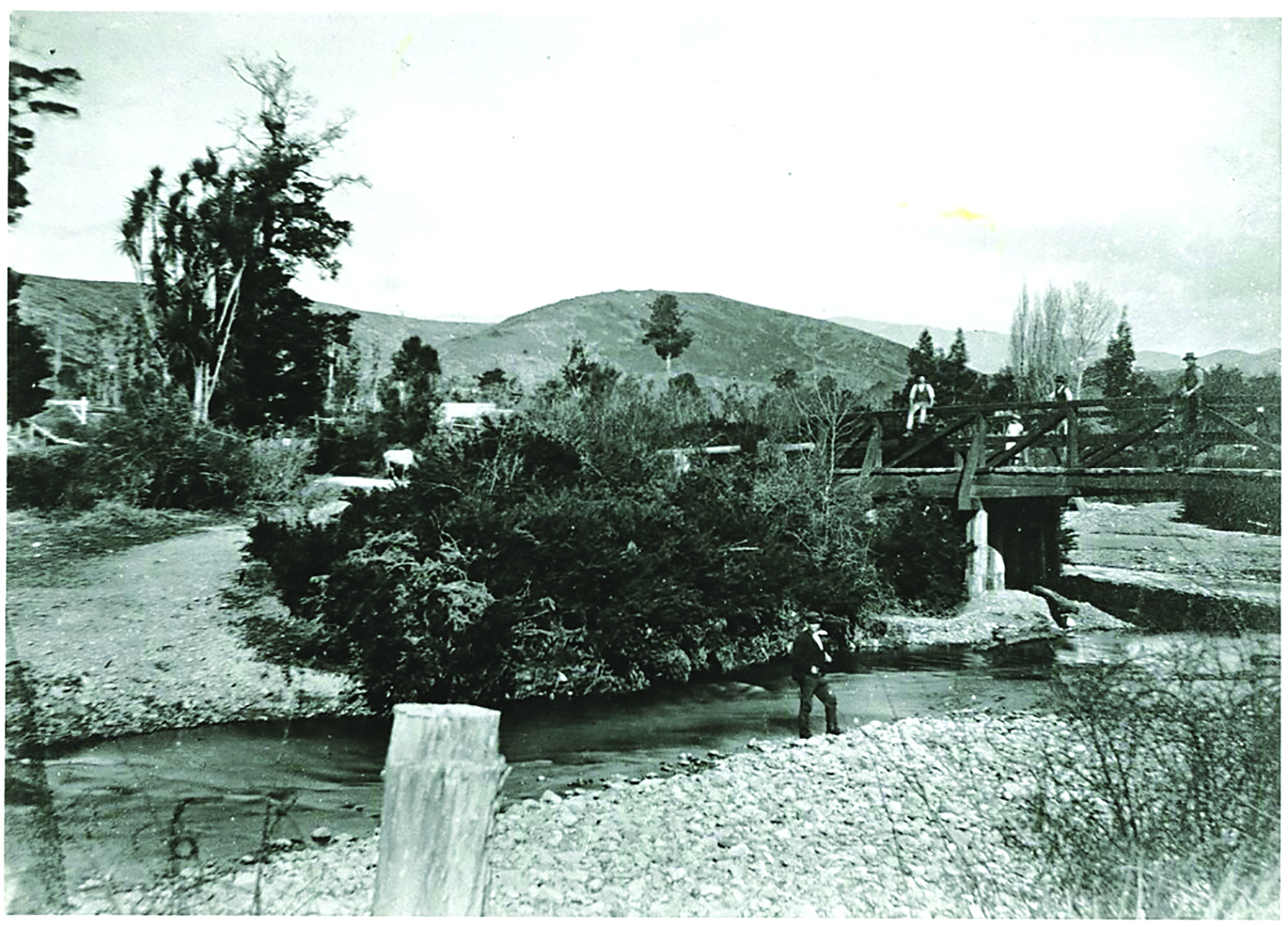History: Wakefield’s dispute over boundaries and names

Jimmy Lee Brook and cart bridge, Waimea South Collection.
At a public meeting held in the Wakefield schoolroom in March 1865, residents met to continue an earlier discussion on proposing a new educational district of Foxhill and Wakefield.
What followed was an interesting conversation about names and disagreement over boundaries.
Mr James Pearce commenced proceedings by reading a letter to the Board. The letter was as follows:— “Sir, I have laid the Memorial of the Wakefield and Foxhill ratepayers before the Central Board, and are instructed to apply to you for a description of the precise boundaries of the proposed new Educational District, on the receipt of which the Board will again take the matter into consideration.”
Mr. Tunnicliffe, one of the oldest settlers in the district, was asked to state his views on the subject. He replied he was one of the first who came into Wai-iti Valley to look for land.
Captain Wakefield told him he had better go up the country and form a village, as it was very likely the people then in the employ of the New Zealand Company would be turned adrift sooner or later, and that it would be much better for them all if they could each settle down on a piece of land.
He succeeded in securing a section, and this was the commencement of the present village of Wakefield.
He stated that they defined the boundaries to be the first crossing of the Wai-iti upwards, and Jimmy Lee’s Brook downwards, and that anyone who took the trouble to look at the maps in the Government office would see Wakefield written across this part of the country in large letters.
Mr Henry Midgley then asked whether he could tell them how it was that the other side of Jimmy Lee’s Brook came to be called Lower Wakefield.
Mr. Tunnicliffe’s terse reply was that the Baigents came to live in the area on the section later occupied by the Norrises and the Fairhalls.
Mr. M’Rae, who lived near the Baigents, called his farm Pitsfure, and this led to the village being called Pitsfure Village, as was the church.
Sometime afterwards, the name of the church was altered to St. John’s, and the village was also called St John’s Village, but after a time the name was altered again to Foxley Village. Then a new settler came to Foxley, was made schoolmaster, and canvassed for another alteration in the name. and succeeded in getting the public house called the Wakefield Arms and argued from this that the place must be Wakefield.
Mr. Tunnicliffe was asked whether he did not think that was the proper name, he replied NO, and that he thought it was quite bad to rob them of their name. At a meeting held in reference to the Road Ordinance Act, he said that Mr. Baigent had told the people that the village had no name, which led to it being called ‘No-name Village’.
Mr Tunnicliffe concluded by saying he had given them a correct account of the matter, which would show them that Wakefield was the name of their district, and he would not cease his endeavours as long as he had breath to confine the name of Wakefield to its proper limits, viz.: between Jimmy Lee’s Brook and the first crossing of the Wai-iti.
He reminded those attending that at a meeting held nine years previous they had to stick up for their name, when the people below tried to filch it from them.
It was then agreed the boundaries would be the portion of the Wai-iti Valley, comprised between the 88 Valley Stream, known as Jimmy Lee’s Brook, and the crossing of the Wai-iti River by Bridge’s Line, and reasons given to the Central Board.
In favour of Jimmy Lee’s Brook as the lower boundary was that it was a natural boundary and had for the last 20 years been the dividing line between Wakefield proper and what was called Lower Wakefield.
